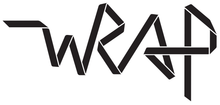Nick Dahlen creates striking illustrations with fluid shapes and strong shadow work. The Minneapolis-based artist believes that images can be as effective as words in conveying meaning and pours his own thoughts and feelings into his illustrations.
Interview by Wrap
Nick Dahlen has an instantly recognisable style. Dark shadows edge his supple and malleable shapes, giving stark definition to his smoothly contoured lines. It’s a style that borrows from his beginnings in graffiti and street art and is influenced by cubist painters and surrealism, but arrives at something completely unique. From a broken down car, bunch of bananas, or group of men enjoying a game of chess, Nick’s everyday scenes are simple but full of personality.
He’s also carved himself a niche in foody illustrations, a specialisation which came along more or less by accident with a chance commission. From leafy greens which sprawl over the page to a corn duo peeping out of their curling green husks, Nick has found that designing these vegetables, fruits, and other edible goods has been the perfect way to experiment and break out of his illustration comfort zone.
We talk to Nick about creating nuance through simplicity, finding motion in his art, and using images instead of words to convey his feelings.


What does a normal workday look like for you? What tools and methods do you use to make your illustrations?
I typically start my day by making breakfast and coffee then sitting around and listening to music. I’ll start some new drawings based on photos I’ve taken recently or ideas that I’ve jotted down. I’ll do this for an hour or two if it’s a good day. Depending on the projects I have going at the time I’ll use either Prismacolor pencils or watercolours to make my illustrations on paper. If it’s an illustration commission, I’ll usually bike to a coffee shop or somewhere nice to sit and I’ll work on that for a while. If I’m making a screen print, I’ll just bike to my studio and get straight to work, or if I’m working on paintings I’ll go to my painting studio and work there. My paintings are a mix of latex, acrylic, oil and pencil on canvas which I stretch myself. Sometimes I’ll just skate or bike around for a while, just watching the world go by. It helps me to relax my mind and also get some new ideas going.


The influence of cubist artists like Picasso and Léger is evident in your work, particularly in your heavy shadows. What is it about this style that appeals to you?
I think I just identify with the energy and motion that exists in that style. It’s as though every line is a reaction to another existing line, creating a kind of harmony that I don’t really see in any other style of art. I feel like I use this as a lens for viewing the world visually; dissecting everything structurally so I can recreate it in my own way.
My use of shadow stems from being heavily influenced by pieces like Miro’s ‘The Farm’, or Léger, or Tarsila do Amaral. It just hits so hard for me. Honestly, I’m trying to get away from it a bit because I feel like I’m getting so comfortable with just adding this last layer of shadow to make it smack harder. But I’m torn because I have so much fun with it and I do feel like it’s part of my own style and personality now.

Despite embracing the exaggerated shapes and stark colours of surrealism, you are usually depicting ordinary, everyday scenes. Why do you choose to focus on these aspects?
I guess I just want to put out good energy that people can relate to. I obviously have crazy thoughts and ideas and things, but I’d rather let that seep through in subtle ways. I do find beauty in the simple things in life but it’s about creating a nuanced lens of the way I see things, in the hope that others do too and can identify with it.
My imagery is usually pretty simple, but, at the same time, I think it can still create nuance to convey internal tension of struggle, through showing movement or through the heavy sickly colours. I’m not a very good speaker, and can’t always convey what I mean through words, which is why I make images! But I think my thoughts are coded in my illustrations as well.


You draw a lot of food, and recently did the illustrations for creative brand Mythology’s recipe book. What is your favourite kind of food to eat, and what is your favourite kind of food to draw?
The food illustrations started when I got a random commission a while ago where someone wanted me to make a series of food pieces, which at the time I’d not done before. It was pretty much the first time I was made to do something outside of my comfort zone or go-to style, and I really liked the results. Ever since then I’ve just kind of run with it, and then more commissions related to food came my way and I’m not mad about it! It’s a fun topic. But, painting aside, I love food and cooking. I’m not that good of a cook but I can do a thing or two. I love some fire roasted vegetables and fish!
And my favourite food to draw? Obviously, the apple, pear shapes, grapes, bananas, and other fruits have been my go-to for a while. Recently I’ve been doing more cruciferous vegetables like broccoli, asparagus, and radishes which have much more interesting shapes going on. But I’d like to do some more elaborate food ideas or themes if anyone has any jobs for me!
––––––––––––
nickdahlen1.bigcartel / @nickdahlen_












